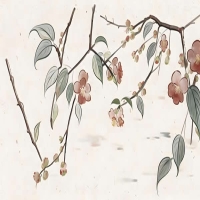再如,宋代词人晏殊的《浣溪沙》中:"无可奈何花落去,似曾相识燕归来。"这里,"花落去"暗喻时光如水流逝,而"燕归来"则带来一丝希望,整体营造出一种花与水交织的轮回感。诗人通过花与水的对比,抒发了对人生无常的感慨,以及对美好事物易逝的怜惜。这种诗句不仅读来朗朗上口,更让读者在欣赏之余,反思自身的生活与情感。
花水的诗句之所以能流传千古,源于其深厚的文化底蕴。在中国传统文化中,花 often 象征 beauty and fragility, while water represents flow and eternity. The combination creates a rich tapestry of meanings, from the transient nature of life to the enduring power of memory. For instance, in the works of Li Bai, the "Flower Water" imagery often appears in contexts of farewell and nostalgia, such as in his poem "Seeing Off a Friend": "桃花潭水深千尺,不及汪伦送我情。" Here, the depth of the peach blossom pond water is used to measure the depth of friendship, blending natural elements with human emotion in a profound way.

Moreover,花水的诗句不仅限于表达 sadness or loss; it can also convey joy and renewal. In spring-themed poetry, blossoms floating on water symbolize rebirth and the cycle of seasons. A classic example is from the Tang dynasty poet Wang Wei's "Deer Enclosure": "空山不见人,但闻人语响。返景入深林,复照青苔上。" While not explicitly mentioning "flower water," the imagery of light reflecting on moss and water evokes a similar sense of harmony between nature's elements.
In modern times,花水的诗句 continues to inspire artists and writers, serving as a bridge between past and present. Its appeal lies in its ability to evoke universal emotions through specific, vivid imagery. Whether in classical poetry or contemporary adaptations, these verses remind us of the beauty in impermanence and the flow of life itself. By exploring such诗句, we not only appreciate the artistry but also connect with the deeper philosophical underpinnings of Chinese culture.
Overall,花水的诗句 is a testament to the enduring power of poetry to capture the essence of human experience. Through its elegant blend of natural imagery and emotional depth, it offers readers a timeless reflection on love, loss, and the passage of time.
花水的诗句,自古便是文人墨客笔下的常客,它承载着自然之美与人生哲思的交融。在中国古典诗词中,"花"与"水"的意象常常相伴出现,象征着时光的流逝、生命的轮回以及情感的细腻表达。唐代诗人杜甫在《春望》中写道:"感时花溅泪,恨别鸟惊心。"虽未直接提及"水",但"溅泪"二字暗含了泪水如花般洒落,与水意象巧妙结合,表达了战乱时期的忧国忧民之情。这种花水交融的笔法,不仅增添了诗歌的意境美,更深化了情感层次。



 相关阅读
相关阅读










